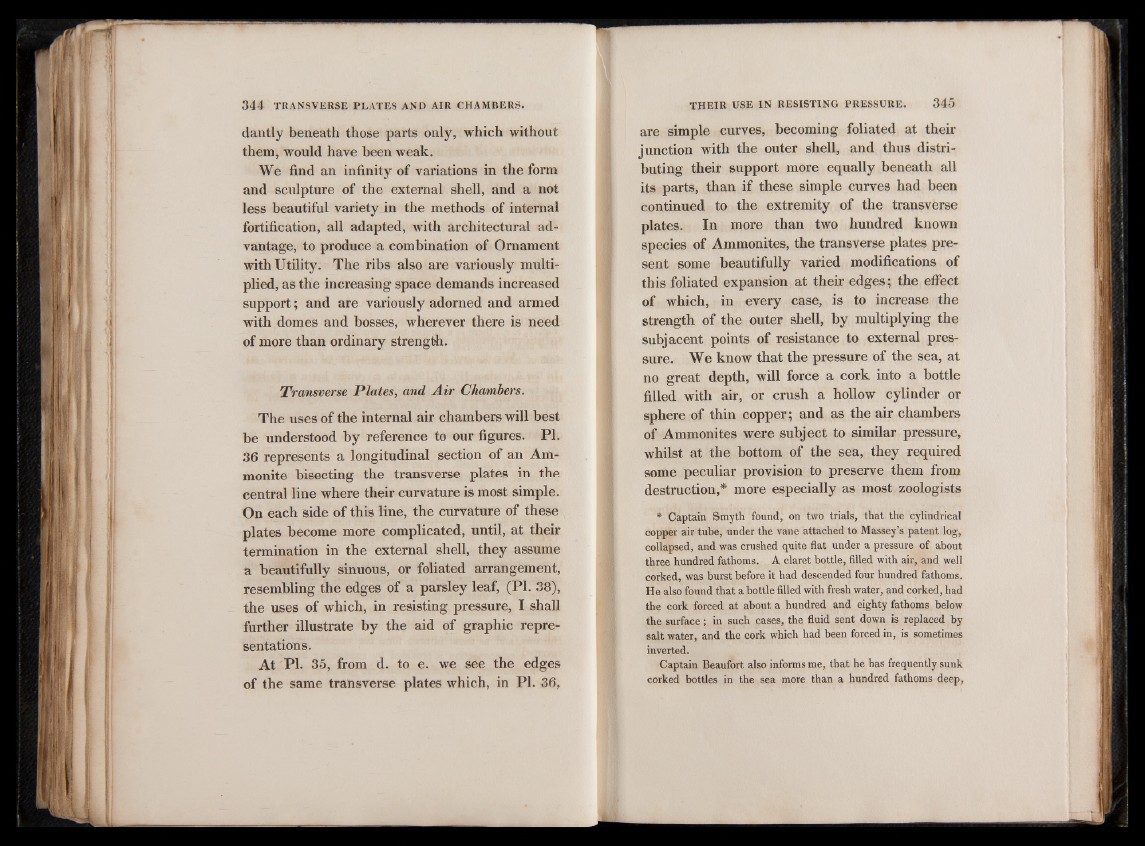
dantly beneath those parts only, which without
them, would have been weak.
We find an infinity of variations in the form
and sculpture of the external shell, and a not
less beautiful variety in the methods of internal
fortification, all adapted, with architectural advantage,
to produce a combination of Ornament
with Utility. The ribs also are variously multiplied,
as the increasing space demands increased
support; and are variously adorned and armed
with domes and bosses, wherever there is need
of more than ordinary strength.
Transverse Plates, and A ir Chambers.
The uses of the internal air chambers will best
be understood by reference to our figures. PL
36 represents a longitudinal section of an Ammonite
bisecting the transverse plates in the
central line where their curvature is most simple.
On each side of this line, the curvature of these
plates become more complicated, until, at their
termination in the external shell, they assume
a beautifully sinuous, or foliated arrangement,
resembling the edges of a parsley leaf, (PL 38),
the uses of which, in resisting pressure, I shall
further illustrate by the aid of graphic representations.
At PL 35, from d. to e. we see the edges
of the same transverse plates which, in PL 36,
are simple curves, becoming foliated at their
junction with the outer shell, and thus distributing
their support more equally beneath all
its parts, than if these simple curves had been
continued to the extremity of the transverse
plates. In more than two hundred known
species of Ammonites, the transverse plates present
some beautifully varied modifications of
this foliated expansion at their edges; the effect
of which, in every case, is to increase the
strength of the outer shell, by multiplying the
subjacent points of resistance to external pressure.
We know that the pressure of the sea, at
no great depth, will force a cork into a bottle
filled with air, or crush a hollow cylinder or
sphere of thin copper; and as the air chambers
of Ammonites were subject to similar pressure,
whilst at the bottom of the sea, they required
some peculiar provision to preserve them from
destruction,* more especially as most zoologists
* Captain Smyth found, on two trials, that the cylindrical
copper air tube, under the vane attached to Massey’s patent log,
collapsed, and was crushed quite flat under a pressure of about
three hundred fathoms. A claret bottle, filled with air, and well
corked, was burst before it had descended four hundred fathoms.
He also found that a bottle filled with fresh water, and corked, had
the cork forced at about a hundred and eighty fathoms below
the surface; in such cases, the fluid sent down is replaced by
salt water, and the cork which had been forced in, is sometimes
inverted.
Captain Beaufort also informs me, that he has frequently sunk
corked bottles in the sea more than a hundred fathoms deep,